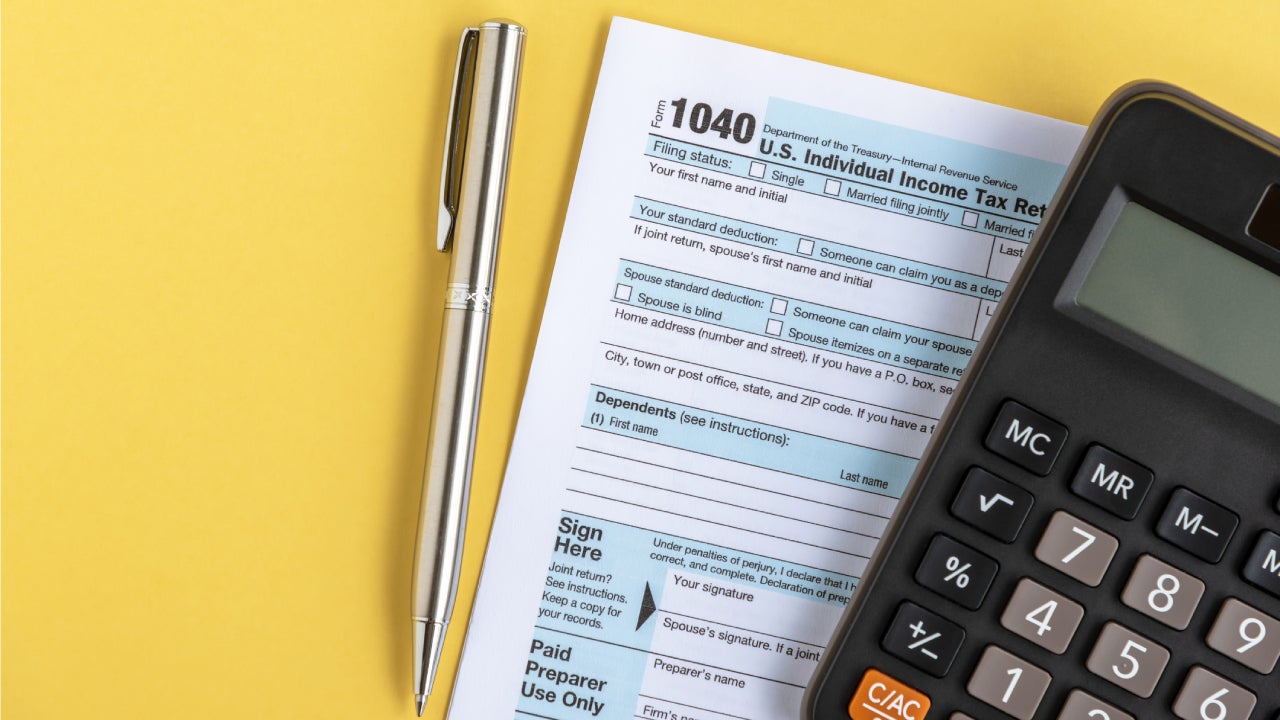W-4 form: How to fill it out in 2025

If you got a big tax refund this year — or faced a big tax bill — now is a good time to revisit your W-4 form. Also known as the the Employee’s Withholding Certificate, the W-4 is a crucial tax document that tells your employer how much in federal taxes to withhold from your paycheck.
The more that your employer withholds from your paychecks, the more likely it is that you’ll get a large tax refund. On the other hand, if you don’t have enough withheld, then you’ll face a tax bill come tax time. (The W-4 form is for employees, not independent contractors or gig workers, who must make estimated tax payments.)
If you submit a revised W-4 now, then you have a number of months of paycheck withholding to set you up for exactly the situation you want come tax time next year.
How to file a W-4 form in five steps
You can do all five steps below to fill in your W-4, but only Steps 1 and 5 are required by the IRS. Steps 2 to 4 are optional — only do them if they apply to your situation.
Step 1: Enter your personal information
The first step is to fill out your name, address and Social Security number in sections 1(a) and 1(b).
Make sure your name is as it appears on your Social Security card — if it’s different, the IRS says you’ll need to contact the Social Security Administration to ensure you receive credit for your earnings.
For your tax filing status, check one of the three boxes in section 1(c).
- Single or married filing separately.
- Married filing jointly or qualifying surviving spouse.
- Head of household (for single taxpayers who pay more than half the cost of keeping up a home for themselves and a qualifying person).
Step 2: Multiple jobs or spouse works
The second step applies only if you’re holding down two jobs at once or if you’re married filing jointly and you and your spouse both work. If one of these scenarios applies to you, then you have three options:
- Use the IRS tax withholding estimator, which is the most accurate way to calculate how much you should have withheld. Once you complete the process, the tool lets you download a W-4 (and one for your spouse, if married) with the withholding information filled out correctly.
- Use the multiple jobs worksheet on page 3 of the W-4 form. After filling out the worksheet, enter the amount on line 4(c) on your W-4.
- If you and/or your spouse work a total of only two jobs, simply check the box at the end of line 2(c) on the W-4 (you must also check the same box on the W-4 for the other job). By checking the box, your standard deduction and tax brackets will be cut in half for each job to calculate withholding. This option is somewhat accurate for jobs with similar pay; if one job pays more than the other job, more tax than necessary may be withheld, and this extra amount will be larger the greater the difference in pay between the two jobs, according to the IRS.
Step 3: Claim dependents
The third step is for figuring out how much of the child tax credit (and credit for other dependents) you might be able to claim. The IRS has a tool to help you determine who you can claim as a dependent.
If you have dependent children under age 17, multiply the number of children by $2,000. If, for example, you have three children under 17, enter $6,000 on the first blank line. If you have other qualified dependents, you can multiply the number of them by $500 and enter this amount in the second blank line of this section. Add these two figures together and enter the sum on line 3.
Need expert guidance when it comes to managing your money?
Bankrate’s AdvisorMatch can connect you to a CFP® professional to help you achieve your financial goals.
Step 4: Additional income and deductions
The fourth step is for other adjustments you might want to make. This step has three parts.
- Other income (not from jobs): You can include other income you receive not related to jobs, such as interest, dividends and retirement income. Enter the total on line 4(a).
- Deductions: If you plan to claim itemized deductions (rather than the standard deduction) to lower your tax liability, fill out the worksheet on the bottom of page 3 and enter the result on line 4(b).
- Extra withholding: You can withhold additional tax from your paychecks for each pay period, including any amounts from the multiple jobs worksheet. You can designate a specific amount for withholding, like an extra $50 from your paychecks, on line 4(c).
Step 5: Sign and file with your employer
Once you’ve reviewed your form and verified that the data you provided is correct, sign and date it and return it to your employer.
What to keep in mind when completing your W-4
You can change information on your W-4 as needed. If you start a second job, for example, consider filling out a W-4 for the new job and submitting an updated W-4 to your existing employer, checking the box on line 2(c) on both forms.
If your life situation changes, that’s another good reason to submit an updated W-4 to your employer. For example, perhaps you became the sole caregiver for a dependent child and now qualify for head of household status. That could entitle you to a higher standard deduction, resulting in lower tax liability compared with a single filer status. Changing the status on your W-4 could mean more money for you in each paycheck, rather than waiting till tax time to get your money back as a refund.
Claiming an exemption from withholding
If you had no tax liability in the previous year and don’t expect to owe any taxes this year, you may be able to claim exempt status on your W-4. Doing so tells your employer to refrain from withholding any of your pay for federal taxes. See page 2 of the W-4 form for more information. If you choose this option, you’ll have to fill out a W-4 form each year by Feb. 15 (or by the first business day after if the 15th falls on a weekend or holiday) to maintain your exempt status.
FAQs about filling out Form W-4
Here are some frequently asked questions about filling out the W-4 form.
Why we ask for feedback Your feedback helps us improve our content and services. It takes less than a minute to complete.
Your responses are anonymous and will only be used for improving our website.






